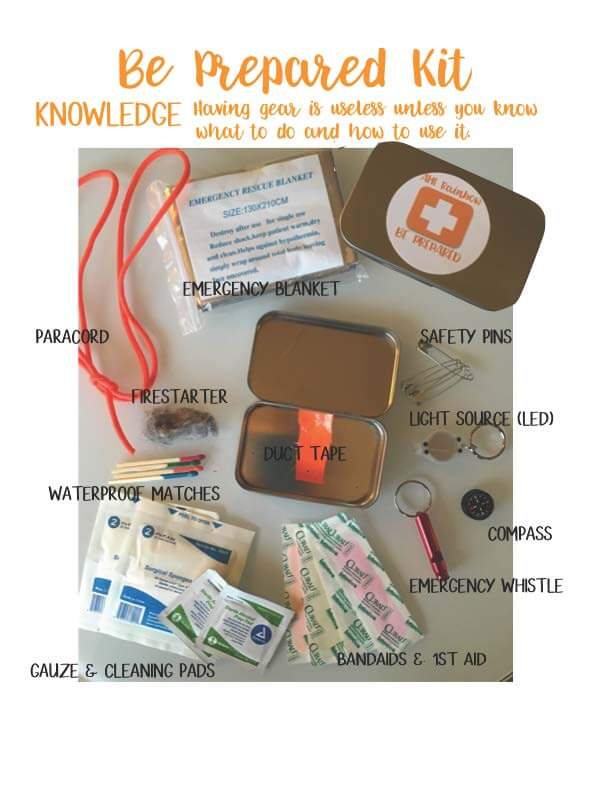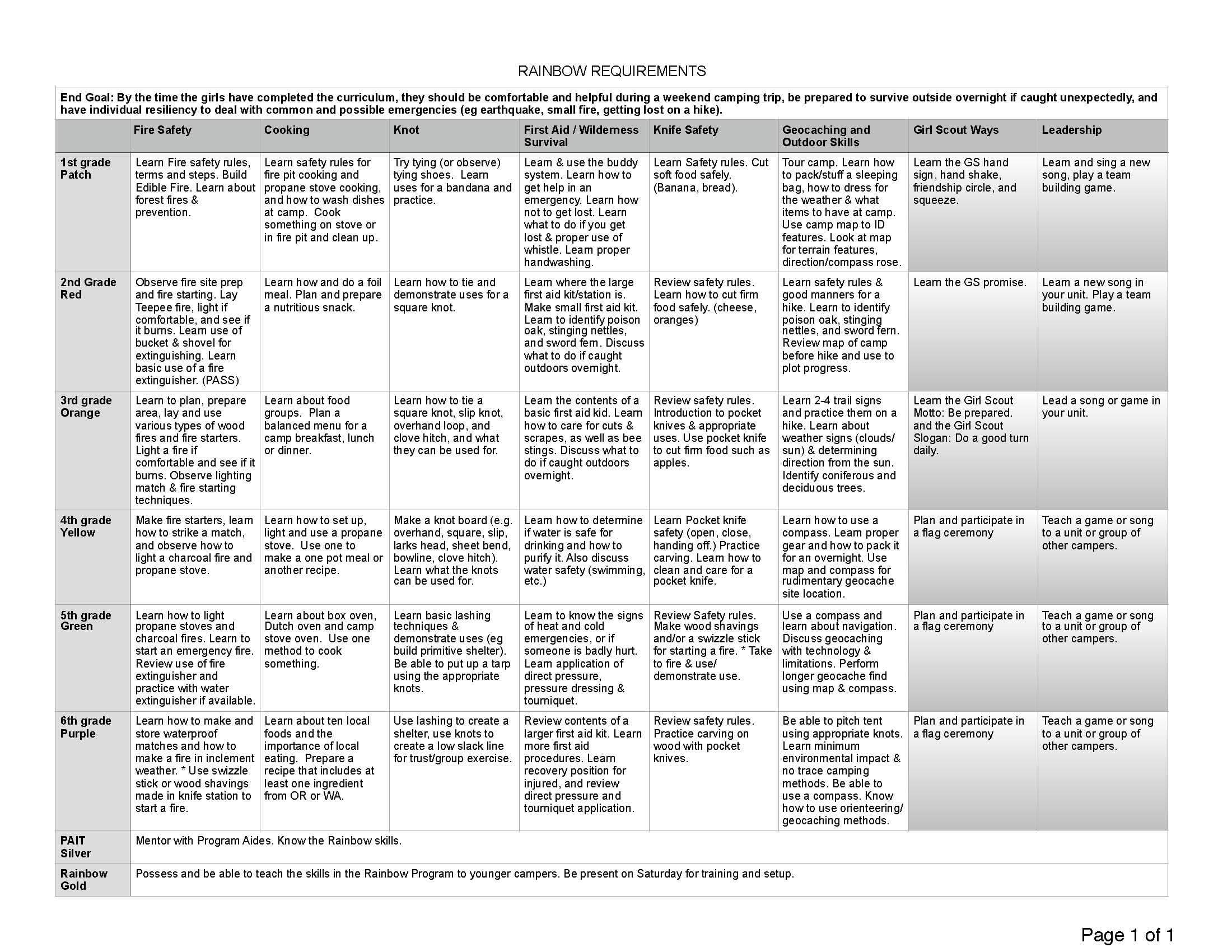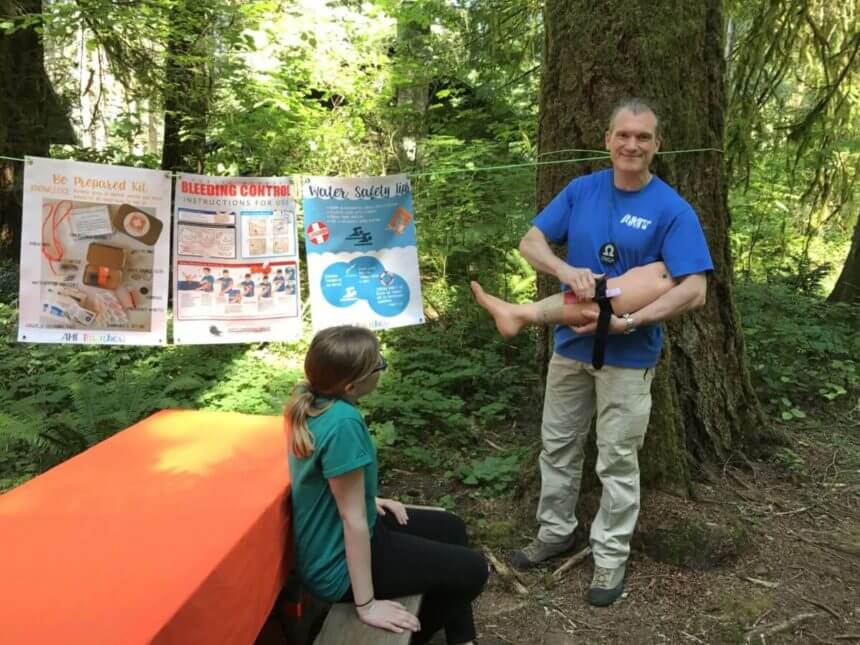
Be Prepared: Training your kids for emergencies
- Posted by Mike Shertz MD/18D
- Categories MARCH, More
🕖 Reading Time, 7 minutes
In support of our daughter’s experience at a local Girl Scout camp, we agreed to help rewrite the curriculum for their “Rainbow Progression” program of outdoor skills to ensure kids can be prepared.

Mission Statement: Be Prepared for emergencies
Initially, despite the Girl Scout motto of “Be Prepared,” the camp program lacked a mission statement. For those who have taken my classes, you know that a mission statement is critical: if you don’t know where you are going or what the goal is, how will you measure success? Therefore, we created a mission statement for this very mixed audience:
By the time the girls have completed the curriculum, they should:
- Be comfortable and helpful during a weekend camping trip,
- Be prepared to survive outside overnight if caught unexpectedly,
- and Have individual resiliency to deal with common and possible emergencies (eg, earthquake, small fire, getting lost on a hike).
With that in mind, we assigned each outdoor skill station1 a list of tasks, taken from Girl Scouts, Boy Scouts, Frontier Girls, NASAR, Smokey the Bear, Red Cross, Peter Kummerfeldt…Pretty much anywhere we could find information on teaching kids age-appropriate skills. We found many programs are underestimating our kids, teaching skills below their abilities, and failing to teach them important life skills.
For the First Aid curriculum, we wanted to change the current paradigm of coddling kids: We know kids can learn to stop massive hemorrhage. So we built that into the curriculum.
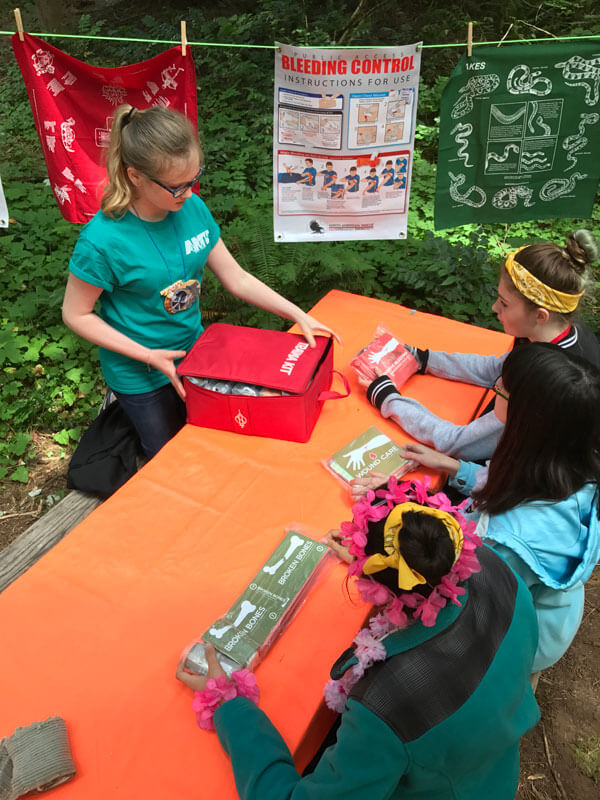
How Not to Get Lost
For the youngest girls, we began by ensuring they knew the buddy system – because you never leave your Ranger buddy behind nor outrun your support element. They learned how to get help in an emergency: calling 911 when in town and using a whistle when in the woods. (The GS leaders who had to lead 20 1st graders in a whistle drill were not happy with us, but the girls were delighted and learned a valuable skill – you can, in fact, hear their whistle all the way from the other side of camp).
First aid, hemorrhage control, and recovery position
We taught them the basics of a first aid kit, where the large camp first aid kit is, and how to care for basic cuts and scrapes. Each girl created a Be Prepared kit by the time she was in the fourth grade, including small items from each of the stations. By fifth grade, the girls learned how to tell if someone is badly injured, use direct pressure, bandages, pressure dressings, and use commercially available tourniquets. After tourniquets, the girls practiced putting each other in the recovery position and learned the signs and symptoms of shock.
Interestingly, while the girls were game to self-apply the tourniquets, several leaders had what can only be described as mini-freakouts, worrying the girls would hurt themselves. They won’t. They wore the tourniquets for a few minutes, complained they were really tight or pinched, and learned a valuable life skill. Similarly, since high school students teach the curriculum under the watch of trained adults, some leaders tried to train the girls to loosen the tourniquets periodically. NO! Old myths die hard, and we put many to rest at this camp that included 350 girls aged 6-18 and volunteers numbering over one hundred.
Our daughter subsequently created her own introduction to casualty care for her middle school.
Training at Home
Not sure where to start getting prepared with your own kids? Try the Hug a Tree program for handling getting lost outdoors and the Colorado Parks and Wildlife production with Peter Kummerfeldt for another. For high-quality, tactical first aid training, of course, you could sign up for Tactical Casualty Care with Crisis Medicine to learn the skills yourself, so you can teach your kids to be prepared for emergencies.*
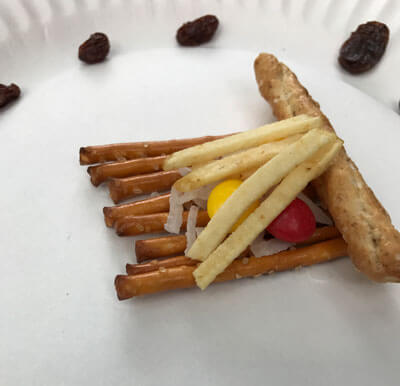

1 The outdoor skills stations are: First Aid, Knives, Fire, Outdoor Cooking, Navigation, Knots,
*Note: the Crisis Medicine TC2 program is not designed for kids. By the time my daughter was 13, she had seen the entire class, but not at all one time. There are graphic photographs of injuries in the course. If you want to head down that path, start with our free Kids Casualty Care class, consider the Essential Casualty Care class as they get older, and work your way up to TC2…
Interested in the entire skill set and progression? Download the program pdf here.
Other highly recommended resources to check out:
Dr. Mike Shertz is the Owner and Lead Instructor at Crisis Medicine. Dr. Shertz is a dual-boarded Emergency Medicine and EMS physician, having spent over 30 years gaining the experience and insight to create and provide his comprehensive, science-informed, training to better prepare everyday citizens, law enforcement, EMS, and the military to manage casualties and wounded in high-risk environments. Drawing on his prior experience as an Army Special Forces medic (18D), two decades as an armed, embedded tactical medic on a regional SWAT team, and as a Fire Service and EMS medical director.
Using a combination of current and historical events, Dr. Shertz’s lectures include relevant, illustrative photos, as well as hands-on demonstrations to demystify the how, why, when to use each emergency medical procedure you need to become a Force Multiplier for Good.

